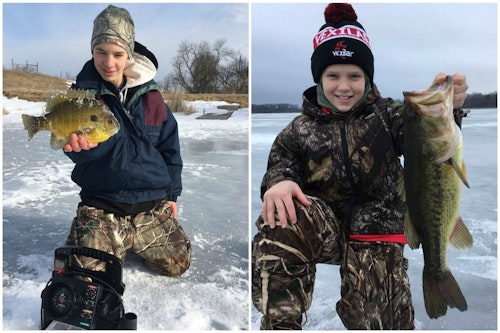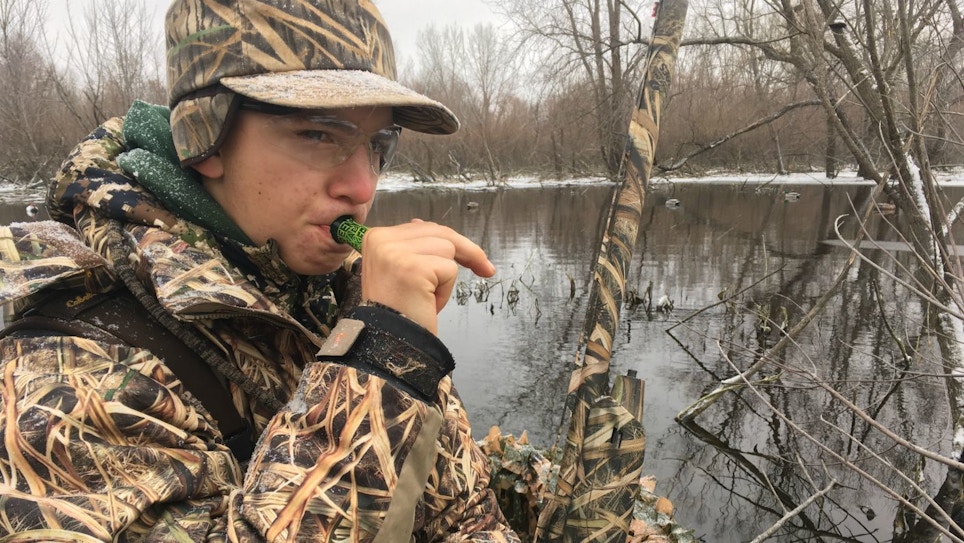Long before magazines, YouTube, Facebook and other media outlets began catering to outdoors sports, friendly advice and word of mouth was the most common way to learn the best ways to care for your gear, stalk a deer, set up a blind or call in a predator. Special tips and tricks from friends and family still play a role today and will be the primary way to learn for many hunters and outdoorsmen. The GVO staff weighs in with the best advice they’ve been given; maybe you’ll find some of it helpful. Feel free to share your best advice with us in the comments. Maybe you even received that advice from us in a previous issue. If so, let us know what issue it was in.
Dave Maas, Senior Editor for Bait & Tackle Business, Bowhunting World, Archery Business and Whitetail Journal
That’s an interesting question, and one I can answer in two words: Cotton kills.
If that doesn’t make sense to you, then allow me to explain.
Growing up in Minnesota, I learned early on from my dad the proper way to dress for the cold. It didn’t matter if our family was spending a January day downhill skiing, or if Dad was taking my brother and me whitetail hunting in November, the ability to stay comfortable in freezing temperatures was critical.
Dad taught me how to dress in layers, and it all began with avoiding cotton clothing next to your skin. “Cotton kills,” he stated plainly as we packed for deer camp when I was 12. “You’ll sweat while walking to your stand, and cotton underwear and t-shirts will become damp. As soon as you stop hiking, you’ll begin to shiver. You won’t last an hour on stand. Except for pajamas, anything you own that is cotton stays home. Period.”
Thankfully, Dad provided me with non-cotton layering garments so I could enjoy outdoor activities during Minnesota winters, and I’ve done the same for my two sons.

Hilary Dyer, Group Managing Editor for Grand View Outdoors
My dad’s a veritable wealth of one-liners and sage advice, but one of his most-repeated phrases is, “Take care of your weapon, and your weapon will take care of you.” It’s meant as a reminder that your day isn’t finished until you have wiped down your gun or bow and stowed it properly. Dad does a lot of old-school flintlock muzzleloader hunting during the Pennsylvania late season, and I have many childhood memories of him repeating the “Take care of your weapon, Kiddo.” advice as he meticulously cleaned that old flintlock with a bucket of smelly stuff, stinking up the whole cabin. In that case, if the gun isn’t properly cared for, it very well might not fire the next day. Of course, over the years I have neglected to follow this advice once or twice, always to my detriment. I once came home from a duck hunt so exhausted that I left my shotgun (blued and walnut, a somewhat impractical affinity I also learned from Dad) in the case overnight. A couple of days later, “Take care of your weapon” was ringing in my ears when I opened that case and discovered a much more difficult cleaning job that I had created for myself by letting moisture sit on the gun longer than it should have. And there was the time I borrowed my husband’s semi-auto for a round of sporting clays, put it back in the gun cabinet without wiping it, and didn’t look at it again for a few months until dove season rolled around. Sure enough — rust had taken hold in the loading port. I’ll never hear the end of that one. Certainly, not all guns are that finicky. I don’t think I’ve cleaned my synthetic turkey shotgun in … well, I don’t recall the last time I cleaned it, actually, and it always goes BANG. But the advice remains: Take care of your weapon, and your weapon will take care of you.
Alan Clemons, Editor for Bait and Tackle Business, Digital Editor Predator Xtreme, Shooting Sports Retailer and Tactical Retailer
The best advice has come from older mentors and fellow hunters: Slow down, be patient and be aware of what's going on around you.
When I was a kid learning to hunt deer, my father taught me to look for the flicker of an ear or tail. Look for movement, however slight, such as a deer stepping along or browsing. That also applied to a squirrel leaping from a branch or sitting still watching the ducks overhead. It applies now when I'm fishing and going too quickly. Sometimes that's fine, but often I'll slow down, take it all in, think about what's going on, maybe change my lure, and proceed from there.
About 10 years ago I was fishing on Clear Lake in California with pro angler Skeet Reese, who was trying to help me learn about swimbaits. He was at my shoulder yelling about my retrieve. "Slow down!" I tried to do so. "Slow down!" he yelled again. Damn, man, this is agonizing! Finally, I got it. Slow, slow, slow ... and a bite, a 3-plus-pound bass.
Slow down, watch and listen to what's going on around you. Be patient and slow down, man.
Scott Mayer, Editor for Tactical Retailer and Predator Xtreme
I'm not so sure I can actually recall being "given" the best advice as much as I observed it. The best observation that really sticks out is to minimize the amount of stuff you take into the field.
When I was a teen, I used to load myself down with everything from an extra entire box of ammunition to even a hatchet and water purification tablets — all that for a morning deer hunt from a treestand on public land within walking distance of the vehicle!
The life-changing moment for me was when I went mountain goat hunting with guide Harro Obst. I was loaded down as usual — Filson Tin-cloth jacket rolled up and strapped to my frame pack, extra sweaters, emergency blanket, etc. When we landed the boat to start climbing the mountain, I hefted my burdensome pack onto the shore and then lifted Harro's while he was securing the boat. I almost flipped over lifting his feathery pack.
If you've never been after goat in BC, the hardest part is getting through the trees and above the tree line. Branches push you back and then claw at you after you pass, and you're wading through shin-deep moss that hide stone bowling balls. The going is tiring and loaded makes it worse. Along the way I kept shedding stuff, leaving sweaters, jackets, binocular cases and such hanging in trees hoping we would go back the same way we went up.
Harro had minimized the weight of everything with his pack, even going so far as to cut the extra lengths of the various straps. He had everything we needed — water, lunch, rangefinder, spotting scope, first-aid kit and emergency supplies, and yet his pack weighed almost nothing compared to mine. It was a lesson taught without a word being spoken.






